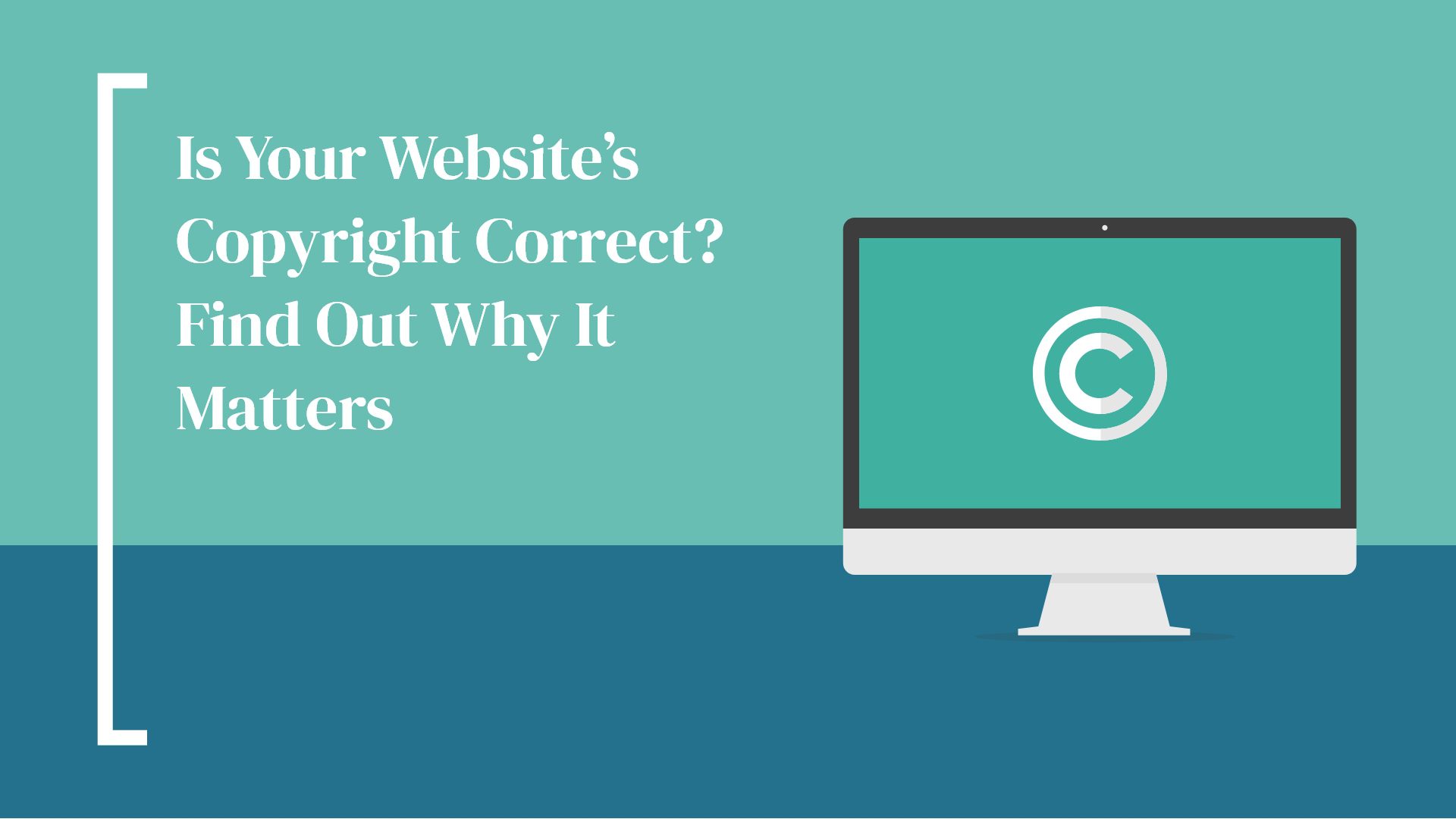When you’re scrolling through a website, you’re likely not paying much attention to the copyright at the bottom of the page. There’s no big reason why you would need to note another website’s copyright date—but there are several good reasons for your website’s copyright to be up to date and formatted correctly.
What Is a Copyright?
A copyright is “the exclusive legal right, given to an originator or an assignee to print, publish, perform, film, or record literary, artistic, or musical material, and to authorize others to do the same.” Basically, it lets users of your site know that the content on the site is not free for taking, copying, or use in any way without permission. This is particularly important for sites that have content that could easily be copied such as a photography portfolio, original designs, or original poetry or prose.
Why Does It Matter?
Here’s the good news: since the Copyright Act of 1976, all works are automatically protected from the moment they’re created. So then, why use a copyright symbol and date? This extra step is a reminder to the viewer of your site that the work is protected and also who owns the work. It’s like adding a belt when you’re already wearing suspenders; it’s just an extra layer of protection.
Additionally, an out-of-date copyright is a sign of an out-of-date website. An outdated design can negatively impact your credibility. Users are more knowledgeable and cautious than ever due to the prevalence of scammers. Therefore, they are more inclined to judge a business based on its website or visual appearance. If your design appears out-of-date, it can create the perception that your business is behind the times or potentially untrustworthy.
How Should Copyright Be Formatted?
According to Copyrightlaws.com, your website’s copyright should be formatted the following way:
- The “c” in a circle, ©, or the abbreviation “copr.” or the word “copyright” should be present.
- The name of the copyright owner (not necessarily the author) should be included in the notice.
- The year of the first publication should be set out. These elements need not necessarily appear in this sequence. An example is: © Mary Clark 2023 or Copyright © Mary Clark 2023.
Need Help with Your Copyright?
Good news if you’re already a Hammersmith Support maintenance client – we’ve got your copyright covered and take care of this for you! And if you’re not already a maintenance client, we’re here to help. Whether your company is large or small, Hammersmith Support’s team provides our clients with resources typically only available at larger web agencies—except we provide them with a much more personal and accessible touch. Schedule your complimentary consultation, and let’s talk through your questions.

